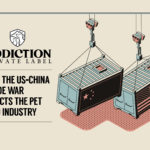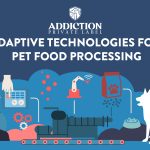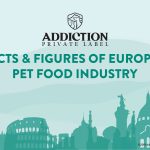By Andrew Prest, PhD MIcrobiology
It is the pet food manufacturer’s responsibility to prevent ‘unacceptable levels’ of microbiological, physical and chemical contamination in pet foods. Acceptable levels of contaminants are developed and defined primarily by the Codex Alimentarius Commission (or CAC).
The CAC was established by the World Health Organisation (WHO) and the Food and Agriculture Organisation of the United Nations (FAO) in 1963. The commission has over 186 members and covers 99 percent of the world population. Codex develops international food standards, guidelines and codes of practice for an international food code (including animal feed and oral nutrition compounds) that contributes to the safety, quality and fairness of food trade.
From a food safety perspective, three classes of hazards must be controlled to acceptable levels as defined by Codex and individual governmental agencies such as the FDA. A hazard is defined as ‘the potential to cause’, the overall risk of a hazard is determined by the likelihood (or probability) that the hazard will occur and the severity (or consequence) when the hazard does occur:
Risk = Likelihood x Severity
The 3 classes of hazards are microbiological, physical and chemicals. These hazards are best identified and managed through an effective HACCP program (HACCP stands from Hazard Analysis Critical Control Point). HACCP is a logical system of food control based on prevention.
In brief, this is achieved by undertaking the following steps:
- Understand all products being made—what is making them safe?
- Looking at the production process from start to finish—in order to understand the operating environment and process activities.
- Identifying potential hazards and decide where they could occur in the process.
- Putting in preventative control measures with defined safety limits.
- Monitoring these control measures.
- Writing them down and keeping records as evidence that you’ve done it.
- Ensure that it continues to work effectively. This is achieved in practice by adopting a PDCA approach (Plan-Do-Check-Act).
That’s the theory at least, at a factory level the effectiveness of the HACCP depends entirely on the attitude, competency and capability of the HACCP team members who review risks through a ‘plant, process and people lens’ and the overall ‘culture’ of the organisation. This is really where the ‘rubber hits the road’.
The most effective manufacturing companies create a food safety ‘culture’ within their organisation. This is because making good quality safe foods is about ‘behavior’ as much as it is technical capability and execution. The ideal employee has both the ‘skills and the will’ to do the job. Where food safety risks are introduced is when the employee has either the ‘skills’ but not the will (becomes complacent and does not complete all tasks to the right standard or at the correct frequency or both) or has the ‘will’ but not the ‘skill’ – this is generally true of most new employees – here an effective induction, training and mentoring system is essential to avoid mistakes and potentially unsafe product being introduced into the market.
The worse-case scenario for any manager is to have people who neither have the will nor the skill. These employees are hazards in themselves as they could not only contaminate product but they also cause harm by ‘contaminating’ the people they work with by displaying inappropriate behaviours, this reduces staff morale and is not becoming of a successful business.
Having reviewed and agreed the basic manufacturing process – many companies adopt an end-to-end value stream mapping approach and also include their suppliers and customers in this exercise (these are called SIPOC diagrams).
The SIPOC flow diagram is interrogated by the HACCP team who ask questions such as ‘what could go wrong at this step in the process from a microbiological, physical or chemical perspective’? Has it happened before to us? Has it happened to any other company? If it did happen could we detect it? Do we have steps downstream to manage the risk (how often will it happen and when it does happen how bad can it be?) to an acceptable level?
Every food manufacturing organisation must effectively manage the following areas in order to manufacture safe, quality food in a consistent manner.
These prerequisite areas are: Training – Documentation – Supplier Quality Assurance – GMP – Product Protection – GMP – Sanitation – GMP – Pest Control – GMP – Biosecurity – HACCP – Monitoring Scheme – Instrument and Equipment Calibration – Laboratories and Test Methods – Product Release System – Status Control – Traceability, Lot Identification, Coding – Recall and Crisis Management.
The applicability and scrutiny of HACCP systems to the production and distribution of pet food first came into focus during a class I recall of adulterated cat and dog food contaminated by plant protein (wheat gluten) containing melamine, ammeline, ammelide, and cyanuric acid. The FDA launched the voluntary recall on 16 March 2007, which included over 5,000 products.
A detailed consideration of this type of chemical hazard, together with other chemical, physical and microbiological hazards in relation to pet food safety can be found in the next article.
READ ON: Pet Food Safety – the microbiological, chemical and physical hazards
Looking for a partner to develop a private label for you?
Discover what Addiction Foods Private Label can do for you and your brand.
_______________
About Dr Prest
Andrew Prest is the Founder and Managing Director of Sustainability Systems. He has extensive theoretical and practical understanding of food manufacturing processes and systems having held senior management positions with major global food and beverage manufacturers for over 20 years supported by a Masters in Food Technology and Quality Assurance and a PhD in Food Microbiology. Andrew has significant experience in auditing and integrated systems management within the Quality, Food Safety, Health & Safety and Environmental Management sphere.










